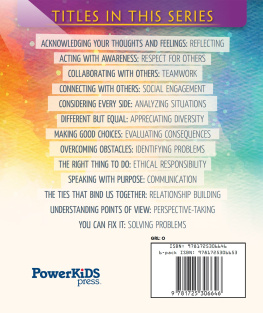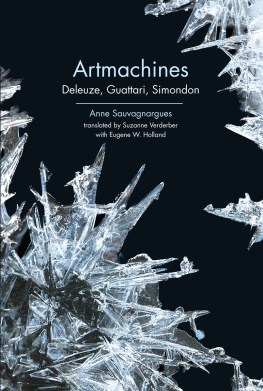Sauvagnargues - Decision-making in crisis situations: research and innovation for optimal training
Here you can read online Sauvagnargues - Decision-making in crisis situations: research and innovation for optimal training full text of the book (entire story) in english for free. Download pdf and epub, get meaning, cover and reviews about this ebook. City: London, year: 2018, publisher: John Wiley & Sons, Incorporated;ISTE Ltd, genre: Romance novel. Description of the work, (preface) as well as reviews are available. Best literature library LitArk.com created for fans of good reading and offers a wide selection of genres:
Romance novel
Science fiction
Adventure
Detective
Science
History
Home and family
Prose
Art
Politics
Computer
Non-fiction
Religion
Business
Children
Humor
Choose a favorite category and find really read worthwhile books. Enjoy immersion in the world of imagination, feel the emotions of the characters or learn something new for yourself, make an fascinating discovery.
- Book:Decision-making in crisis situations: research and innovation for optimal training
- Author:
- Publisher:John Wiley & Sons, Incorporated;ISTE Ltd
- Genre:
- Year:2018
- City:London
- Rating:5 / 5
- Favourites:Add to favourites
- Your mark:
- 100
- 1
- 2
- 3
- 4
- 5
Decision-making in crisis situations: research and innovation for optimal training: summary, description and annotation
We offer to read an annotation, description, summary or preface (depends on what the author of the book "Decision-making in crisis situations: research and innovation for optimal training" wrote himself). If you haven't found the necessary information about the book — write in the comments, we will try to find it.
Sauvagnargues: author's other books
Who wrote Decision-making in crisis situations: research and innovation for optimal training? Find out the surname, the name of the author of the book and a list of all author's works by series.
Decision-making in crisis situations: research and innovation for optimal training — read online for free the complete book (whole text) full work
Below is the text of the book, divided by pages. System saving the place of the last page read, allows you to conveniently read the book "Decision-making in crisis situations: research and innovation for optimal training" online for free, without having to search again every time where you left off. Put a bookmark, and you can go to the page where you finished reading at any time.
Font size:
Interval:
Bookmark:

Series Editor
Jean-Charles Pomerol
Edited by
Sophie Sauvagnargues

First published 2018 in Great Britain and the United States by ISTE Ltd and John Wiley & Sons, Inc.
Apart from any fair dealing for the purposes of research or private study, or criticism or review, as permitted under the Copyright, Designs and Patents Act 1988, this publication may only be reproduced, stored or transmitted, in any form or by any means, with the prior permission in writing of the publishers, or in the case of reprographic reproduction in accordance with the terms and licenses issued by the CLA. Enquiries concerning reproduction outside these terms should be sent to the publishers at the undermentioned address:
ISTE Ltd
2737 St Georges Road
London SW19 4EU
UK
www.iste.co.uk
John Wiley & Sons, Inc.
111 River Street
Hoboken, NJ 07030
USA
www.wiley.com
ISTE Ltd 2018
The rights of Sophie Sauvagnargues to be identified as the author of this work have been asserted by her in accordance with the Copyright, Designs and Patents Act 1988.
Library of Congress Control Number: 2018953112
British Library Cataloguing-in-Publication Data
A CIP record for this book is available from the British Library
ISBN 978-1-78630-343-1
Whether environmental, economic, social, health or humanitarian, a crisis is a complex phenomenon that requires a management strategy specific to each situation. A crisis arises after a sudden and unexpected triggering event, and is characterized by rapid changes that require optimal cooperation between various participants who are faced with a stressful situation. How the crisis is managed impacts how it unfolds.
It is therefore a matter of anticipating events and making decisions, most of which are urgent and crucial, and may need to be made on the basis of contradictory requirements, while facing a context of structural disruption. The complexities of managing a crisis situation can be seen as a set of factors aimed at combating crises and reducing the actual damage suffered, while aiming to prevent or mitigate the negative effects of the crisis and protect the organisation, managers and/or the industrialist (Coombs et al. 2010).
Decisions are made at different levels: the strategic level corresponds to the description of the aims and objectives set in order to deal with the crisis and concerns the decision-making structures; the tactical level is linked to the organization of field operations with a view to implementing the strategies drawn up; and the operational level executes and implements the resources relating to the organization of field operations. The crisis unit is thus the central instrument in the strategic management of the crisis, essential to any organization. It is both an open place because it is at the crossroads of information and its processing and decision-making, and a closed place which must allow the cell to function without disruption (Heiderich 2010).
In the field of major risks, a strategic crisis unit can be municipal, departmental, prefectoral, national or that of an industrial company. It unites human resources, computing and communication resources, individual or collective equipment and specific documentation relating to emergency management.
The realization of the missions assigned to a crisis unit, and anticipating and making decisions, requires a multitude of competences. Flcks model (Flck 2001) proposes four types of combined skills to react to the different professional situations encountered: technical skills (theoretical knowledge and trades, methods and tools, rules and procedures, know-how linked to experience), organizational skills (spatio-temporal organization and management of information flows), relational and social skills (oral and written expression skills, interpersonal skills, managerial and network skills) and adaptation skills (ability to adjust to the situation and its evolution over time and to transfer acquired know-how).
The acquisition and preservation of these skills is complex, all the more so when, outside of a crisis situation, it is not the main goal or function of the people concerned. The crisis unit is subject to high levels of stress as well as to various biases impacting its members in their representation and decision-making. The difficulties encountered by decision-makers in crisis cells in terms of decision-making and collective behavior necessitate training exercises to prepare them to face this type of situation. The implementation of simulation exercises, the development of crisis scenarios outside the framework, the coordination of an even greater number of actors as well as a real line of conduct for crisis units, priorities in crisis management and in particular in terms of training are at the heart of concerns (Lagadec 2012).
The purpose of this book is to specifically focus on decision-making training through crisis simulation. The aim is essentially educational, methodological and practical, and provides a concise review of the major knowledge, methods and innovative tools in this field.
This book is composed of eight chapters:
- The first chapter, Concepts, Tools and Methods for Crisis Management Training, provides an overview of the problem of crisis management training. The authors present the characteristics of the crisis unit before discussing the various aspects of crisis management training, including stress simulations, in detail.
- The second chapter, Towards A Serious Game Within the Frame of Major Crisis Simulations for Decision-makers: How Do We Connect the DOTs?, proposes the development of a semi-virtual training environment to ensure effective learning, mainly through improved experience, engagement and immersion, and realism. Degrees Of Training (DOTs) are organized into general, intermediate and specific skills to be involved in each crisis scenario.
- The third chapter, Improving Crisis Exercises and Managers Skills through the Development of Scenario Design, discusses the interest in improving the scripting phase of an exercise model in order to improve crisis management training and experiential learning.
- The fourth chapter, Elaboration of Tools to Facilitate the Scenario Development of Crisis Management Training, discusses how to develop a scenario which is credible, educational and interactive, so as to encourage trainees to be immersed in a situation which seems realistic and that allows them to acquire knowledge, skills and experience.
- The fifth chapter, How Can We Evaluate the Participants of a Crisis Management Training Exercise, presents an innovative methodology of evaluation and debriefing facilitation, resulting from the observation of the limits of the current training in evaluation and debriefing.
- The sixth chapter, Managing the Game Within Crisis Exercises, focuses on the playful dynamics at work when a group of trainees agree to consider seriously, for a few hours, that they will together role-play a virtual crisis situation. It particularly takes into account the key components of Ludicity, the manifestations of Ludicity, and how to manage Ludicity.
- The seventh chapter, Digital Training for Authorities: What is the Best Way to Communicate During a Crisis?, proposes to standardize some of the analyses performed on crisis management to produce a comprehensive report on the quality of the crisis communication delivered. This report may be produced following a real situation or during an emergency response drill.
Font size:
Interval:
Bookmark:
Similar books «Decision-making in crisis situations: research and innovation for optimal training»
Look at similar books to Decision-making in crisis situations: research and innovation for optimal training. We have selected literature similar in name and meaning in the hope of providing readers with more options to find new, interesting, not yet read works.
Discussion, reviews of the book Decision-making in crisis situations: research and innovation for optimal training and just readers' own opinions. Leave your comments, write what you think about the work, its meaning or the main characters. Specify what exactly you liked and what you didn't like, and why you think so.











